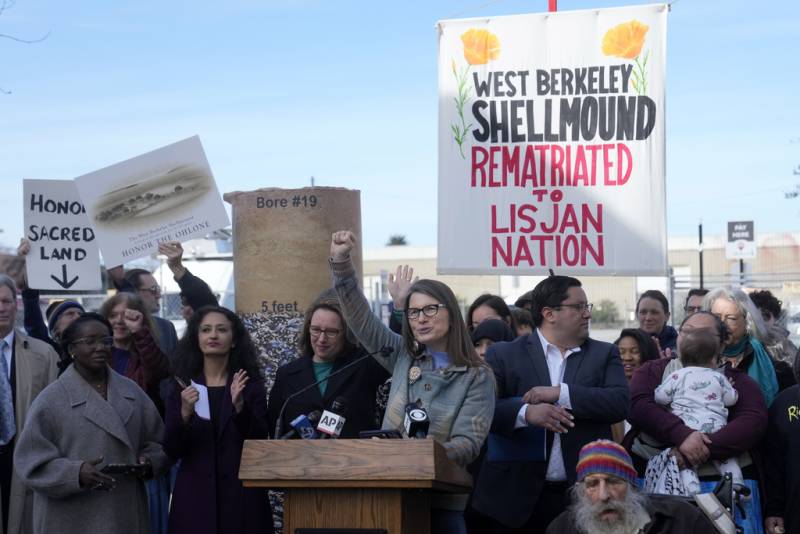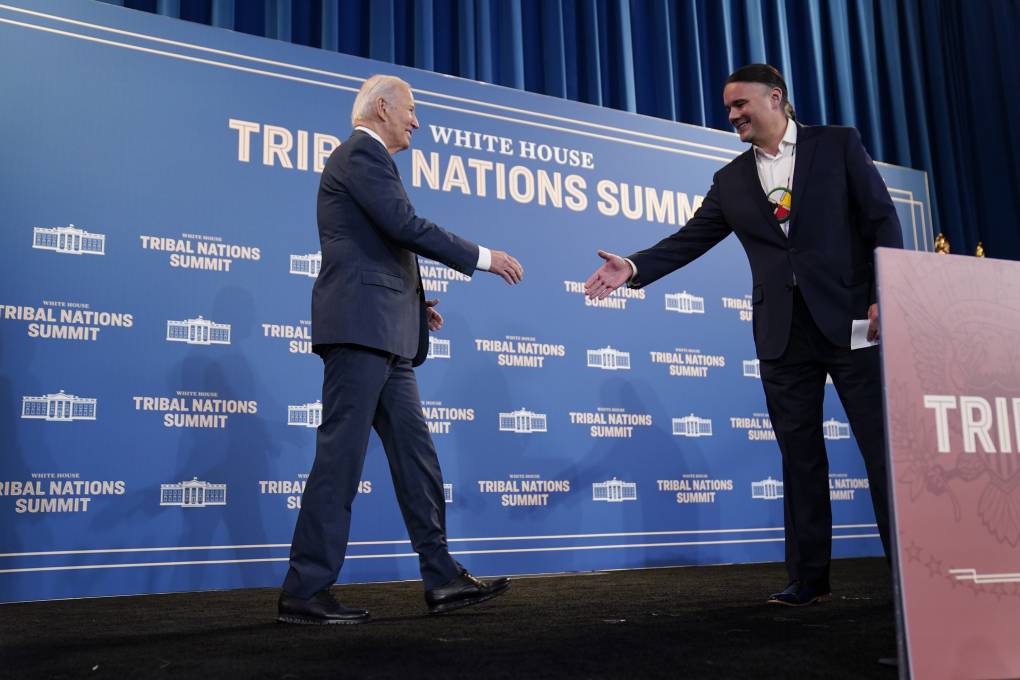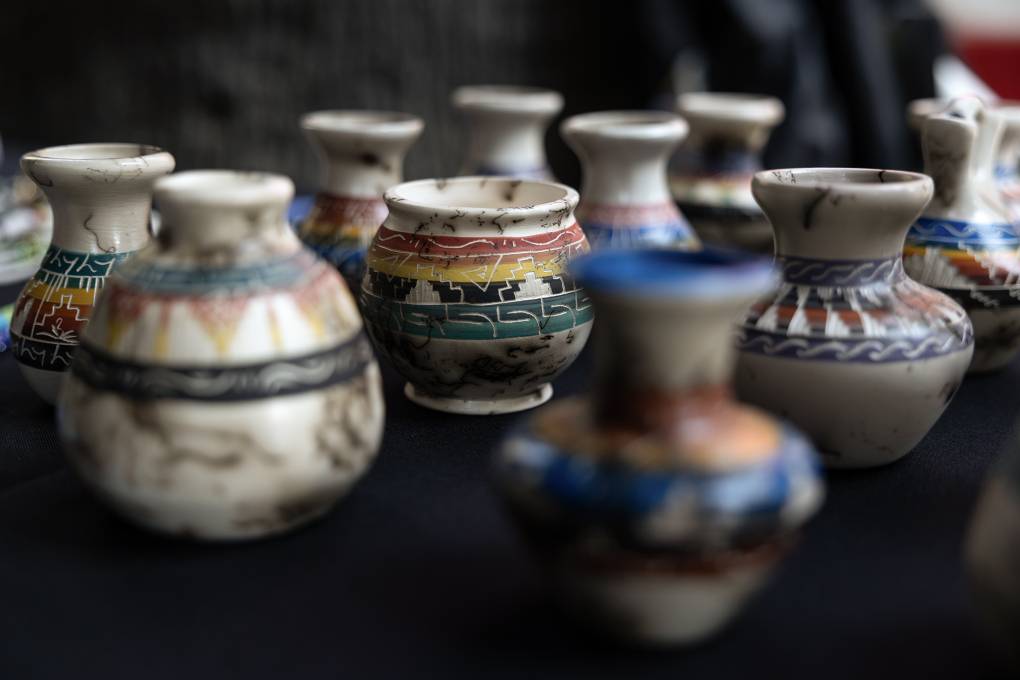The crowd cheered as speakers talked of a movement to restore other lands to Indigenous people. The site — a three-block area Berkeley designated as a landmark in 2000 — will be home to native medicines and foods, an oasis for pollinators and wildlife, and a place for youth to learn about their heritage, including ancient dances and ceremonies, said Melissa Nelson, chair of the board of the Sogorea Te’ Land Trust.
“Thousands of years ago, this site was a thriving … urban center for Native Americans, for California Indians with their beautiful shellmounds dotted all around the bay,” Nelson said. “We want to be a place for global Indigenous leadership to come and gather in solidarity. We want to educate, we want to restore, and we want to heal.”
Before Spanish colonizers arrived in the region, the area held a village and a massive shell mound with a height of 20 feet and the length and width of a football field that was a ceremonial and burial site. Built over years with mussel, clam and oyster shells, human remains, and artifacts, the mound also served as a lookout.
The Spanish removed the Ohlone from their villages and forced them into labor at local missions. In the late 1800s and early 1900s, Anglo settlers took over the land and razed the shell mound to line roadbeds in Berkeley with shells.



